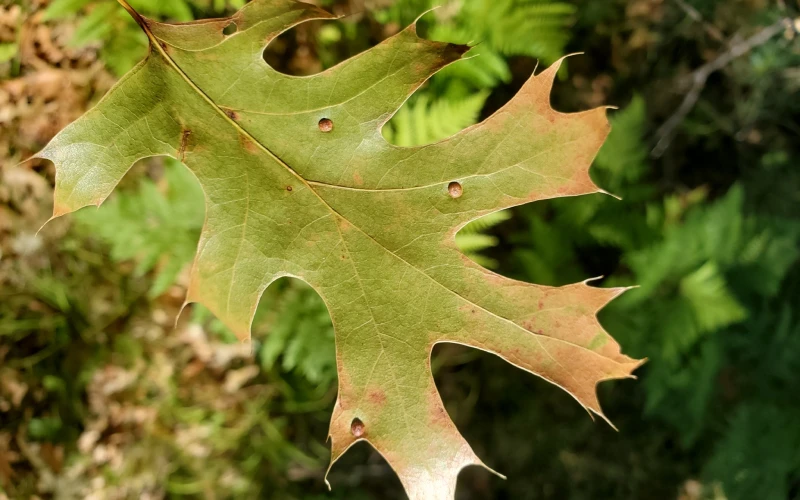Oak Wilt
Description
Oak Wilt is a fatal vascular disease of oak trees caused by the fungus Bretziella fagacearum.This fungus infects the xylem (water-conducting tissues), obstructing the flow of water and nutrients which causes leaves to become discolored and wilt rapidly, eventually leading to the tree’s death. This disease impacts red oak species most severely, often resulting in tree death within a single season.

© csledge via iNaturalist.org, used under CC BY NC
Introduction and Spread
Originally identified as a pathogen in the United States, Oak Wilt has been a significant concern in areas ranging from the Midwest to the southeastern regions. It spreads primarily through root grafts between neighboring trees and overland by insects such as the oak bark beetles and sap beetles, which carry fungal spores from infected to healthy trees.
Distribution
In Canada, Oak Wilt is relatively new, with detections in Ontario near the US border, where it was established. Its presence poses a serious threat due to the mobility of the disease through natural and human-assisted means.
Habitat
This disease thrives in areas populated by oak trees, affecting different species with varying degrees of severity. Red oaks are particularly susceptible and can die quickly once infected, whereas white oaks may exhibit more resistance and slower disease progression.
Identifying Features
Impacts
What You Can Do

Buy Local Burn Local
Buy firewood close to where you plan on using it to avoid transporting unwanted invasive species and diseases. Leave unused firewood on site.
1. Gauthier, M. K., Bourgault, É., Potvin, A., Bilodeau, G. J., Gustavsson, S., Reed, S., … Tanguay, P. (2023). Biosurveillance of oak wilt disease in Canadian areas at risk. Canadian Journal of Plant Pathology, 46(1), 27–38. https://doi.org/10.1080/07060661.2023.2261890
2. Karrie A. Koch, Gina L. Quiram, Robert C. Venette, A review of oak wilt management: A summary of treatment options and their efficacy, Urban Forestry & Urban Greening, Volume 9, Issue 1, 2010,Pages 1-8, ISSN 1618-8667, https://doi.org/10.1016/j.ufug.2009.11.004